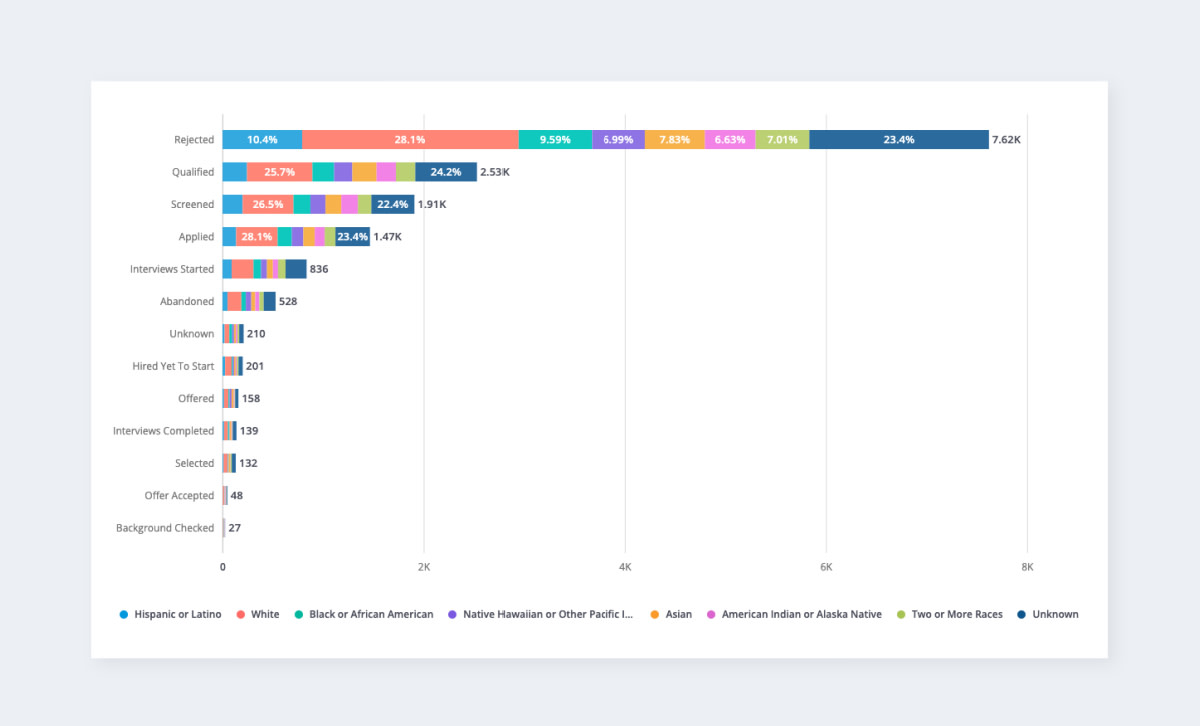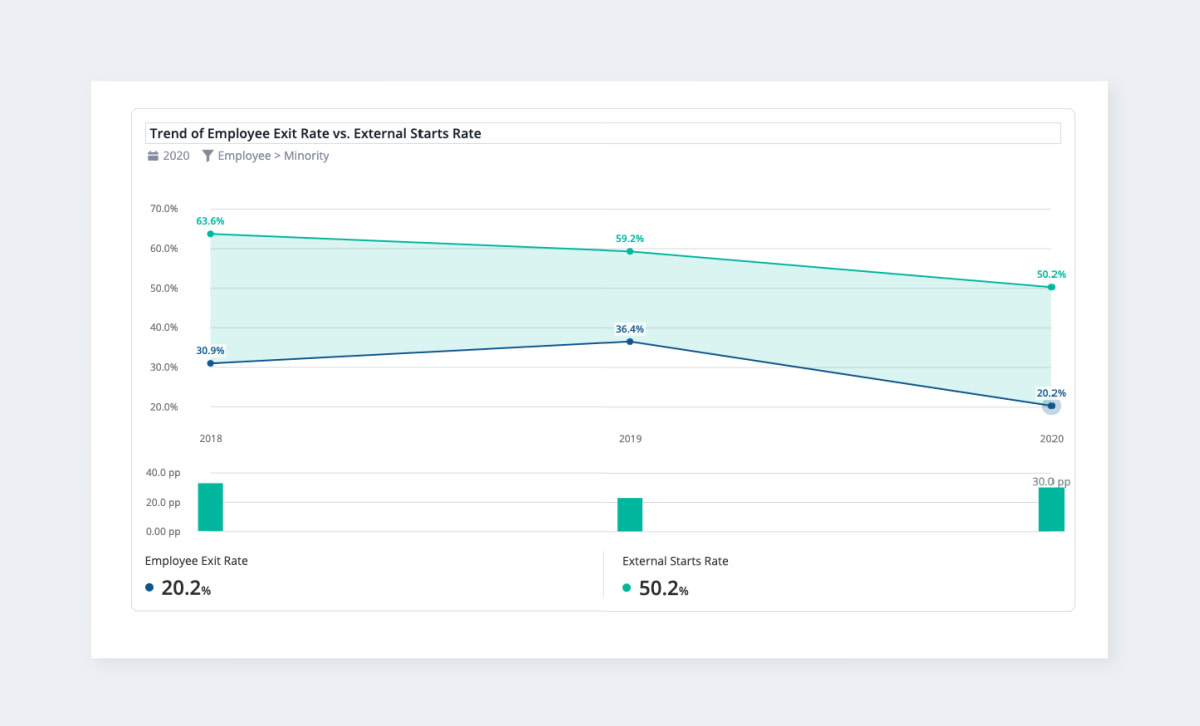Tackle Affinity Bias With These 3 Steps
Hiring for diversity requires more than hiring different ethnicities and backgrounds. Use these three steps to tackle affinity bias.

Hiring for diversity involves more than bringing people with different ethnicities, backgrounds and experiences into the organization. It’s also about creating an employment brand to attract and retain diverse talent. As one analytics leader stated at this year’s virtual HR Technology Conference: “Hire great people. Develop great people. The goal of this era is not to move great people from one company to another.”
Taking a “hiring for retention” approach not only helps reduce turnover costs, it strengthens succession plans by increasing the diversity of “ready now” candidates for more senior roles. However, a particular kind of bias, known as affinity bias, could be holding organizations back from choosing qualified diverse candidates who will stay and grow with the company.
What is affinity bias and how does it hamper DEIB efforts?
Affinity bias is a kind of mental shortcut that causes people to hold a more favorable opinion of someone who shares similar characteristics. It can also take over when organizations hire based on subjective measures like “cultural fit.” For example, a hiring manager might immediately think “she could do my job someday” when interviewing someone simply because they went to the same school and are of the same gender.
This perception—which is often unconscious—can make the interviewer probe more deeply into the candidate’s desires around career growth. On the other hand, if the candidate is not like the interviewer, the interviewer may strictly stick to pre-selected questions specific to the current job opening. This could create a situation where candidates who aren’t like the interviewer are prematurely dropped out of the selection process, or when hired, they don’t stay with the company once they discover that career growth opportunities don’t exist.
Even if affinity bias does not always play out every time a manager makes a hiring decision, it can have a cumulative impact on diversity numbers over time, putting an organization at higher risk of bad press or even legal challenges, such as class action lawsuits.
How to manage affinity bias with people analytics
HR leaders can help their organizations manage this bias effectively and promote more equitable hiring practices by having access to sophisticated people analytics data. Here are three steps you can take with people analytics to manage affinity bias:
1. Identify where there is an unconscious bias
In the absence of data, bias can be hard to spot, because you are now relying on intuition or assumptions. Research has shown that people can still favor others who are like themselves even if they sincerely value diversity. Analytics can help you learn whether diverse candidates are being rejected during the recruitment process or whether they have voluntarily dropped out. In either case, analytics provides you with the facts necessary to take appropriate action.
For example, when looking at the talent in their organization, an industrial manufacturer found that women perform as well as men–and occasionally outperform them. However, a review of the talent acquisition process uncovered that as women moved through the hiring process, more were dropped during the interview stage. The company took strategic, programmatic action to educate hiring managers and mitigate bias, which then increased the success rate of women and minorities to advance through the hiring process.
Another important thing to consider is that the candidate might not pick up on any bias in the selection process, but could experience it once they join the company. This is often detected through new hire surveys, another data source to reveal affinity bias.

This breakdown of diverse applicants in the hiring pipeline provides you with an overview of the entire applicant process, from how diverse candidates move through each stage to where they fall out. Fictional data used.
2. Raise awareness of affinity bias
Even when the stakes are high, strong-arming people into compliance is not the best approach. According to an intensive study conducted by academics Frank Dobbin and Alexandra Kalev, mandatory anti-bias training has been proven to make firms less diverse because it creates backlash. “Decades of social science research point to a simple truth: You won’t get managers on board by blaming and shaming them with rules and reeducation,” they write in this HBR post.
Conversations about unconscious bias that do not incorporate research and evidence will almost always take a wrong turn. On the other hand, leading with data will come across as blame and shame. The organization’s true responsibility is to raise awareness and offer solutions to help hiring managers get better at assessing and retaining talent.
If you present the data as part of a conversation about where there are opportunities to improve, you will likely get more buy-in from hiring managers. Through my experience as a D&I leader, it’s important to first strengthen a manager’s knowledge around bias. This will serve as the foundation for approaching deeper discussions with individuals, where quantifiable data should also be presented to create the shared reality with them.

This chart shows the trend of exits going down, but the number of external hires is consistently higher than those that are leaving, which strongly indicates that the level of diverse representation is growing. Fictional data used.
3. Set quantifiable goals
Setting goals and measuring progress are key components for assuring that your D&I hiring practices are working. Using this standard practice also maintains quality and insights to best practices that warrants continued funding and other forms of leadership support.
Having quantifiable goals is important, and so is having the opportunity to refine practices and correct course if need be. For example, one global organization has leveraged people analytics and a variety of HR tools to increase the representation of women in leadership positions. Though their figures are increasing steadily across the company, the data shows that this is not the case within all business units, group functions, and hierarchical levels. Having this data on-hand enables the organization to keep refining its approach.

With this analysis, you see the mix of employees in the succession slate from a gender perspective. Fictional data used
Supporting human decision-making: The role of data
Bias is universal and should not always be taken as a bad thing. It’s just a part of human nature and shapes our personal sense of safety and security. However, some biases need to be addressed head-on as they carry negative consequences and cause poor decisions. So rather than trying to eradicate all human bias, use data to increase awareness, and then challenge how decisions are made to increase the chances of achieving a shared goal.
In this way, it is possible to make steady progress in the right direction–and measure your progress along the way.
On the Outsmart blog, we write about workforce-related topics like what makes a good manager, how to reduce employee turnover, and reskilling employees. We also report on trending topics like ESG and EU CSRD requirements and preparing for a recession, and advise on HR best practices like how to create a strategic compensation strategy, metrics every CHRO should track, and connecting people data to business data. But if you really want to know the bread and butter of Visier, read our post about the benefits of people analytics.


